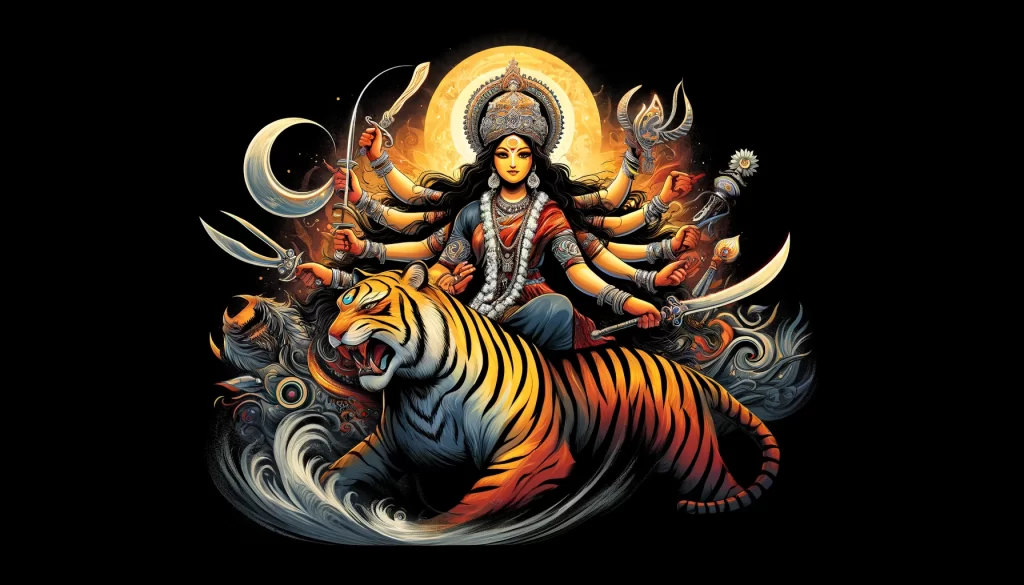On the third day of Navratri, we venerate Goddess Chandraghanta, the third form of Goddess Durga. Known for her bravery and grace, she epitomizes the balance between peace and power.
Who is Goddess Chandraghanta?
Goddess Chandraghanta bears a crescent moon on her forehead, giving her the name, which means “one who has a half-moon shaped like a bell.” Her imagery, riding a tiger and adorned with ten arms each wielding a weapon, depicts her readiness to fight evil.
Symbolism and Significance
Goddess Chandraghanta symbolizes the fierce side of a woman. She shows that one can be both serene and powerful. Her form teaches the importance of courage, determination, and the protection of righteousness.
The Story of Chandraghanta
This form of Goddess Durga is a representation of beauty and bravery. She is believed to reward people with her grace, bravery, and courage. The sound of her bell terrifies demons and evil forces.
Cultural Practices and Rituals
Devotees offer prayers and perform pujas to honor Goddess Chandraghanta. The color associated with this day is usually grey, symbolizing the transformation of a calm individual to a fierce warrior when challenged.
Contemporary Reflections
In the modern context, Goddess Chandraghanta’s story inspires us to find a balance between gentleness and assertiveness. Her narrative encourages us to be peaceful yet prepared to stand up against injustice.
Join us tomorrow for Day 4 as we explore the divinity of Goddess Kushmanda. Immerse yourself in the richness of Hindu culture and spirituality with more enlightening articles at Sanskriti Magazine.








